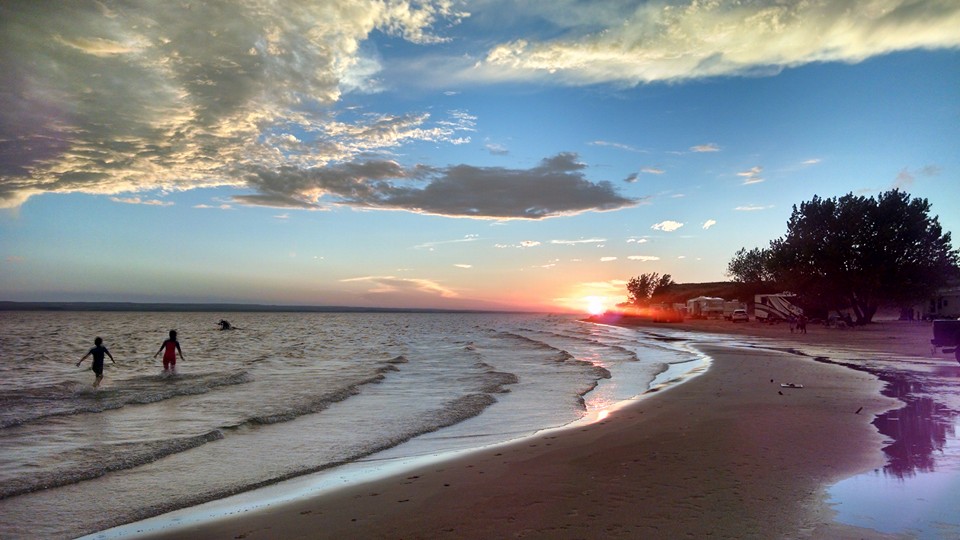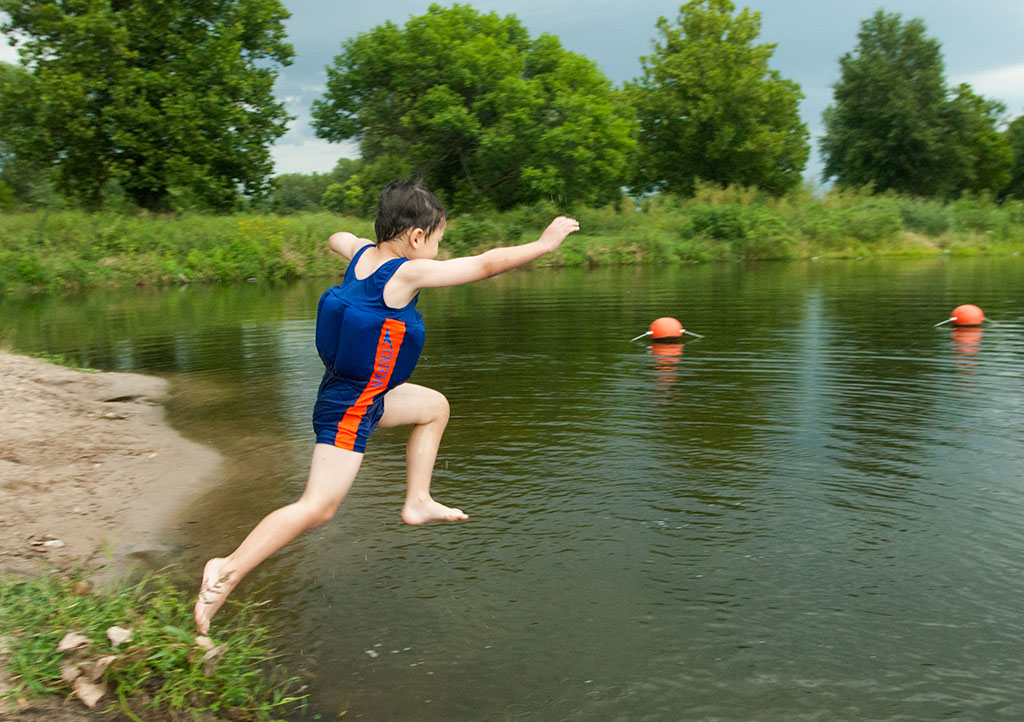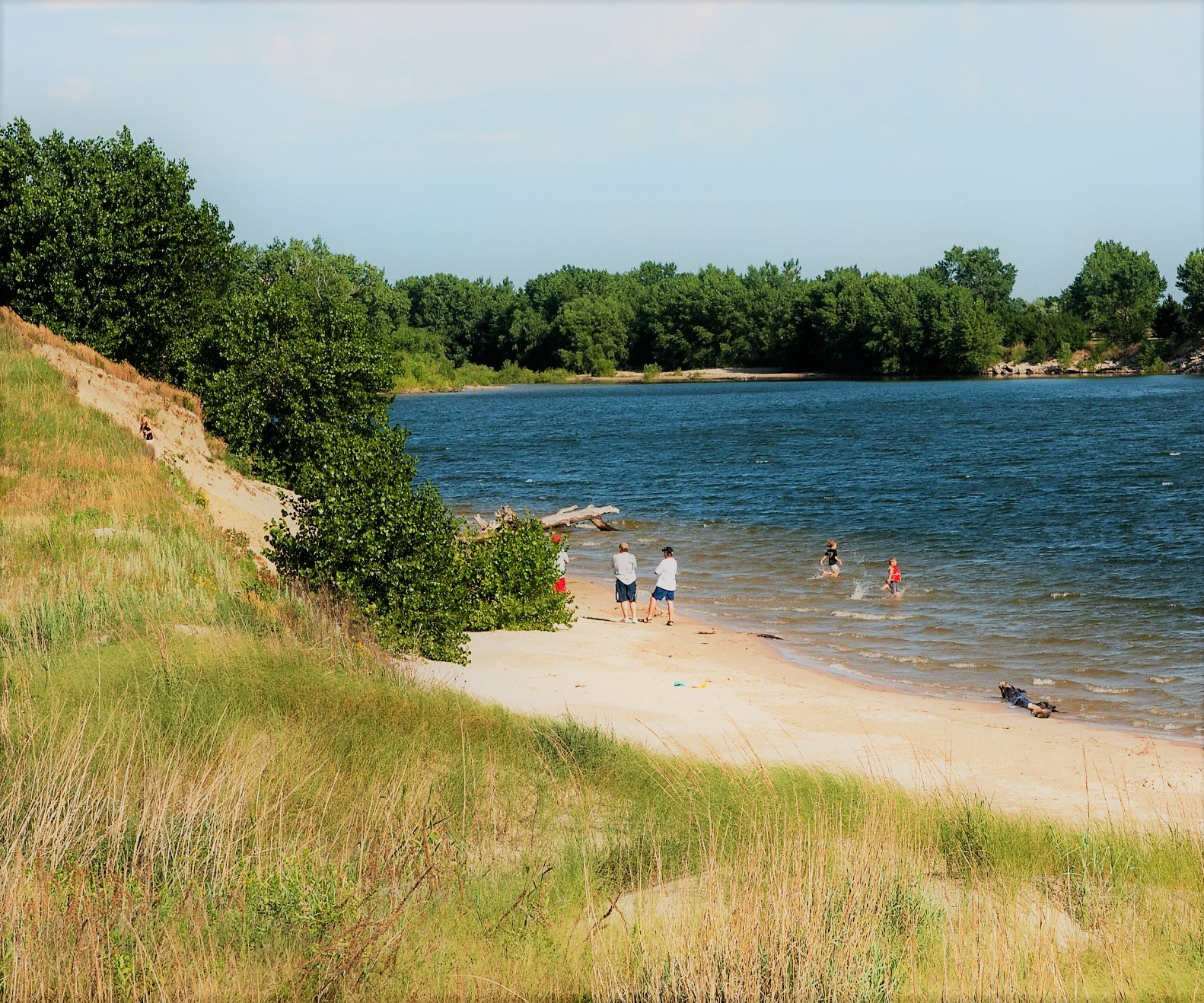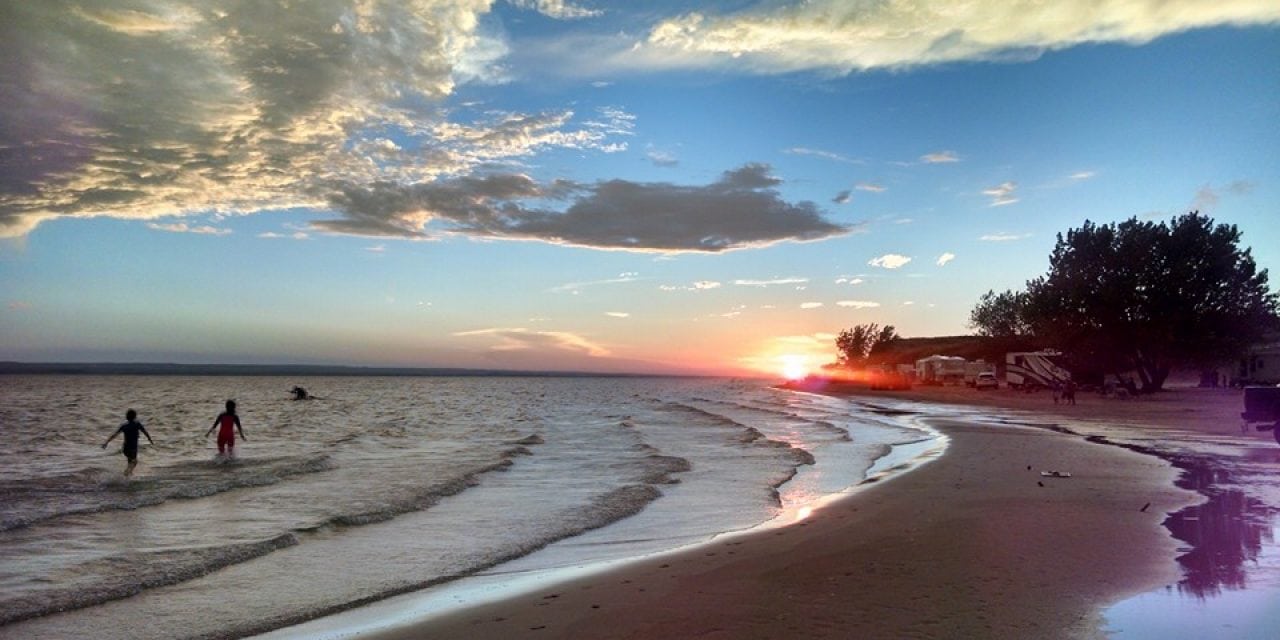The Nebraska state park system offers some fantastic beaches for swimming and wading. From Big Mac to Branched Oak, more than two dozen state recreation areas offer a chance to catch some rays, play in the sand and cool off in the water of lakes and reservoirs during hot summer days.

Beach swimming is blast! My family and I really enjoy it.

However, drowning in dark water is a real danger and one of the most horrific things that can happen right in front of loved ones or good friends. Even folks who know how to swim can drown in the wild environs of a lake or reservoir, so let’s find out how you and your family can have a fun time and stay safe in the water this summer season.

Safety is typically the last thing on peoples’ minds when they hit the water, and that’s a mistake, a colossal mistake. Nobody wants to even address safety concerns or considerations prior to an outing on a beach because you will probably be labeled a “fun spoiler.”
“Fun spoiler” or not, the bottom line is this: We, as homo sapiens, do not have gills to enable us to breath under the water, right? Fish are able to live and breathe in water with their gills and physiology, but we humans need air to breathe. So, the inherent possibility of drowning always exists. Why would someone deny that? We drown when too much water gets into our lungs. When that happens, our lungs can’t put oxygen in the blood. Then, too little oxygen gets to the brain and the rest of the body.
A drowning can happen fast – sometimes in less than two minutes after a person’s head goes under the water. That leaves very little time for someone to help, especially in the stained water of a lake or reservoir with winds, waves and currents.
Scott Eveland, Conservation Officer/Boating Specialist with the Nebraska Game and Parks Commission based at Lake McConaughy in Keith County near Ogallala, says a drowning is not like it is on TV, it happens quickly and quietly and is intensely personal for all involved. He adds: “That’s why we, as conservation law enforcement officers, are constantly stressing safety and making sure everyone is in compliance with laws and regulations for boating and water recreation.”
Many drownings and near-drownings occur when a person falls, loses their footing or gets knocked into the water. But accidents can take place anytime, anywhere and that’s why you need to know to be safe around the water in nature.
Are ready for some stats?
Drowning, which is 100% preventable, is the second most common cause of death from injuries among kids under the age of 14. A new report from Safe Kids Worldwide and Nationwide’s Make Safe Happen finds that 43 percent of drownings involving children occur in open water, such as quarries, oceans, lakes, rivers, retention ponds, reservoirs and ponds. Drowning in pools makes up 38 percent of drownings.
Of the natural water drowning cases where data on supervision were available, the report points out that 62 percent happened in the presence of an adult. In a quarter of those deaths, the adult supervision was compromised by drugs or alcohol, distraction, sleepiness, injury or illness.
Looking back, in 2016 in the U,S., 1,000 children from infancy to age 19 drowned. That was the highest number of drowning fatalities since 2011. On top of that, more than 7,000 children visited an emergency room because of a near-drowning episode.
Fast forward to June of this year here Nebraska. Three drownings associated with water-based recreation at two public southeast lakes serve as a stark reminder to be cautious when enjoying lake activities.
Similar to home and pool water safety, the approach to prevention of natural water drownings incidents and involves ensuring layers of protection that, according to the American Red Cross, include:
*Adequate adult supervision – within arms’ reach supervision for young children and constant visual supervision for older children and adults when they are in the water. Officer Eveland says parents or guardians need to practice what he calls “active adult supervision” of their kids and others around beaches.
*The buddy plan – always swim with a buddy, do not allow anyone to swim alone, even experienced or elite swimmers can have an unexpected problem.
*Personal floatation devices (PFDs or life jackets) – the use of a proper-fitting U.S. Coast-Guard approved PFD or life jacket is absolutely necessary when swimming at any time in natural water for non‐ or weaker swimmers. “Just remember though, life jackets are not substitutes for swimming ability,” notes Eveland. “Take lessons, learn how to swim!”
*Monitoring the weather – keep an eye to the sky and a weather app on your Smartphone or iPhone handy for changing or approaching inclement weather conditions and know the weather forecast for the location where you have scheduled your beach swim.
*Avoiding distractions – your undivided attention is critical when supervising children and others around water. That means staying off of your mobile device, not listening to music, etc.
*Refraining from using recreational drugs or alcohol – drugs and alcohol increase risk and their use should be completely avoided when around water, particularly if you are responsible for supervising children and those who do not swim well or at all.
*Water safety education – successful completion of water safety education including water survival skills classes, boating safety courses and swim lessons is crucial for those planning to spend time on, in or near the water.
*Entering unknown or shallow water cautiously, feet first – you do not know for certain what hazards lurk below the surface of the water, and diving headfirst is never recommended in dark water.
*Doing all you can to limit the amount of water going up your nose – your best option is to keep your head above water, but you can reduce the chance to getting any infections inside the body by wearing nose plugs.
*Checking the water first for a missing person – if someone is missing, the water needs to be checked first. Seconds count in preventing death or disability.
*Learning CPR – knowing CPR increases the chance of survival in the event of a drowning incident.
Here is some other important information that you need to know about swimming along beaches.
The risks from swimming in open water are:
– Rapid water temperature changes
– Steep drop-offs and bottom contour changes
– Difficulty with judging distances
– Limited visibility
– Dangerous currents, undertows or waves
– Vegetation, rocks and other obstacles
These are your ‘regulatory refreshers’ for swimming and wading at Nebraska state recreation area beaches:
– A current, valid state park permit is required on all motor vehicles entering state recreation areas (SRAs) for beach swimming.
– Swimming and wading are permitted in designated areas only. In SRAs, where specific locations along the water have been buoyed and cabled off by Game and Parks staff, swimmers and waders must stay within the boundaries of those locations.
– Swimming and wading activities are unsupervised and go at your own risk.
– The use of flotation devices within designated swimming areas is prohibited, except such devices as are approved by the United States Coast Guard (life jackets).
– The use of surfboards, paddleboards and similar devices, and the throwing of frisbees, balls and other similar devices within designated swimming areas is prohibited.
– Swimming from vessels underway is prohibited.
– Swimming or wading within 20 yards of a boat ramp, boat dock or mooring facility is prohibited.
– Shallow water or surface diving within designated swimming areas is prohibited.
– Possession of glass food or beverage containers on beach areas is prohibited.
– Swimming beaches are off-limits to all animals except for Seeing Eye and service dogs. At select park areas such as the Lake McConaughy SRA, dogs must be maintained on a leash no longer than 6 feet to protect endangered bird species nesting areas (Least Tern and Piping Plover).
– Consumption of alcoholic beverages is not allowed in any designated swimming area. Also, drinking alcohol is prohibited at Lake McConaughy and Willow Creek SRAs.

So, now your ready to buy your state park permit, pack your swimsuit, life jacket, sun block and a picnic lunch, and then come make pleasant memories splashing the summer away safely at one or more of our Nebraska state recreation area beaches!

The post Sun, Sand, Swimming And Safety appeared first on NEBRASKALand Magazine.
















